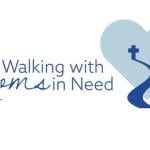
Here’s some brief background:
For a century, give or take, Arlington Heights, IL, a sleepy bedroom community northwest of Chicago along the rail line, was known for its racetrack, Arlington Park, conveniently accessed by its own station. In its heyday, it hosted large crowds who came out to see all the celebrated horses in a beautiful palace of a building, but as ordinary folks lost interest in horse-racing and as “riverboat” casinos won the business of a large number of gamblers, its days were numbered, as it was first told to the Churchill Downs company and then closed down, then sold to the second-highest bidder, the Chicago Bears, in 2023. (The highest bidder was a business consortium who would have brought back racing, which would of course have competed with Churchill Down’s local casino for gambling revenue.) At the time, the Bears announced they would foot the bill entirely for the stadium construction cost, but they’ve since been aiming for indirect subsidies such as fixed/lower tax bills and a TIF designation for the eastern half of the property to maximize their profit from a mixed-use development. And in the meantime, the city of Chicago has been trying to persuade the state of Illinois to provide subsidies to enable them to offer the Bears a favorable arrangement for a new domed stadium in the city, near its current Soldier Field location.
This all formed the backdrop for the municipal elections a month ago, not that candidates necessarily engaged in disputes about the future of the property but that each touted their resume and skills as the one best situated to ensure the best possible outcome of the development of the property, while at the same time being cautious about the proposed renderings of a downtown-like pairing of retail and housing immediately adjacent to the commuter train, out of the fear that it would suck business out of the existing downtown.
And, with the incoming mayor, local architect Jim Tinaglia, set to take office, the Chicago Tribune featured a profile and interview in Sunday’s paper. Just as in the pre-election candidate forums, he expressed his home that not just the Bears, but the White Sox also relocate here. In those forums, he also wished for a convention center. Here he said,
He does not envision another version of a downtown in Arlington Park. No condos or homes. The idea is to create “a place for people to visit, enjoy, experience, spend money and then leave. And then the next people would come, enjoy, spend money and then leave.”
Separately, I’ve been following the proposed Illinois Quantum and Microelectronics Park, which would be funded in part by half a billion in state subsidies and an unknown additional amount of federal money as well as private investment. The intent is for the project to be located in the former U.S. Steel site on the south side of Chicago at the lakefront near impoverished neighborhoods, and the reporting I’d seen gave the impression of whiney locals demanding extra benefits for the privilege of locating in this vacant brownfield, but the other day I came across an article at Illinois Answers Project which painted a very different picture.
Despite some promise of economic revival for South Chicago, an Illinois Answers Project evaluation of the fledgling quantum industry found that opportunities for jobs for high school graduates in the industry are limited, a reality that’s mismatched with the jobs needed in South Chicago where the majority of people have less than a bachelor’s degree and work in health care and retail for an annual income of about $23,000.
The only realistic hope for employment by the locals, whose education levels are far below the level of a high-tech R&D engineer, would be if commercial applications for the new technology are identified, and, given that it seems to be almost an exaggeration to say the industry is “in its infancy,” that’s far away in the best case. Instead, those engineers will be looking for homes with tolerable commuting times, and may drive up home prices and rents nearby. Despite the reassurance that
developers and quantum park administrators say that there will be accessible jobs supporting the quantum industry development, such as human resources, technician and construction work
I have to say that their concerns are well-founded. After all, one of the residents the article profiles, though he hopes to one day earn a middle-class income, admits, “I’m not good with numbers or reading,” and it makes no sense to dangle a HR job, or a short-term construction job, to these community members. The article reports that residents have said:
Forget about the science jobs, some residents attending community meetings about the development have said. What are the jobs that high school graduates can do?
And the promoters of the site offer wishful thinking about a future of manufacturing which may take decades or never exist at all. And fundamentally, rather than chasing this dream, the residents would be better off with some sort of manufacturing facility which can actually employ significant numbers of workers with a high school education and on-the-job training.
Which gets me back to Arlington Park.
The suburb of Arlington Heights has one large employer, the local hospital. It used to have a significant Motorola presence, but not for many years now. Its residents have a low unemployment rate but depend to a very significant degree on the economic health of the surrounding area, including Chicago itself, as well as a variety of corporate headquarters in Schaumburg, the industrial park in Elk Grove to the south, and other employers along the interstates to the east, west and south.
Growing up in Troy, Michigan, a suburb of Detroit, I experienced firsthand the economic development that occurred in the suburbs as jobs disappeared in the city. Given the situation in Chicago at the moment, I think it’s a huge mistake to believe that those jobs will always be there for the asking in the city and in neighboring suburbs.
And yet the new mayor, the outgoing mayor, the trustees, and everyone who has an opinion on anything all speak with one voice: “give us a development with as much tax revenue as possible, and nothing else.” What’s worse, the developments on the wish list would create jobs, but they would be poorly-paying seasonal or part-time jobs, which would likely only increase the degree to which workers in the area struggle with affordable housing or have to commute long distances to work.
Sure wish we were the ones getting the Quantum Park instead!












